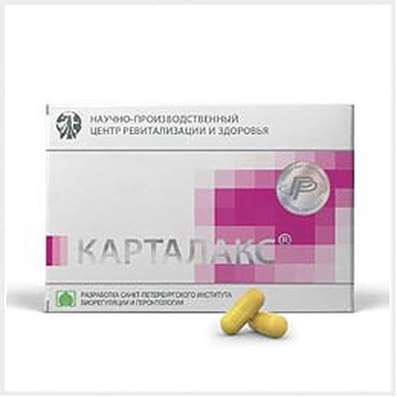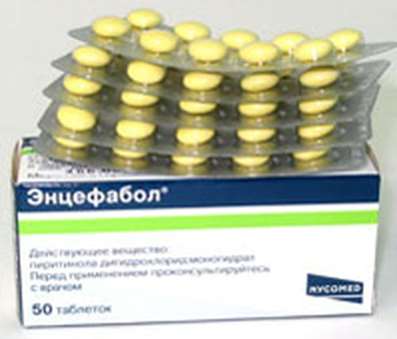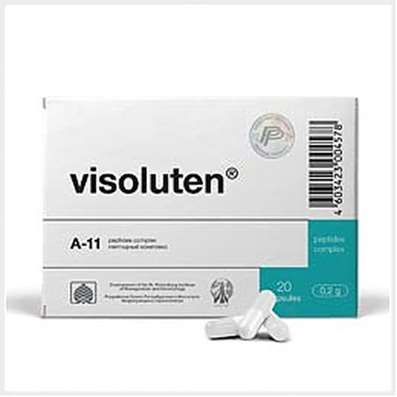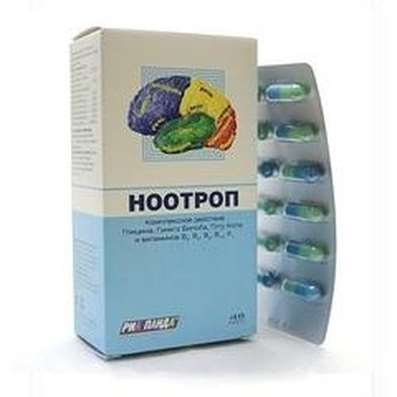Instruction for use: Pipolphen
I want this, give me price
Dosage form: Solution for intravenous and intramuscular injection; Coated tablets
Active substance: Promethazine*
ATX
R06AD02 Promethazine
Pharmacological group:
Antiallergic agent - blocker of H1-histamine receptors [H1-antihistamines]
The nosological classification (ICD-10)
H10.1 Acute atopic conjunctivitis: Allergic conjunctivitis; Allergic eye diseases; Allergic conjunctivitis; Allergic conjunctivitis caused by chemical and physical factors; Allergic rhinoconjunctivitis; Allergic inflammation of the eyes; Spring Qatar; Spring keratitis; Spring conjunctivitis; Conjunctivitis allergic; Year-round allergic conjunctivitis; Exacerbation of pollinosis in the form of rhinoconjunctival syndrome; Acute allergic keratoconjunctivitis; Acute allergic conjunctivitis; Superficial bacterial infection of the eyes; Rhinoconjunctivitis; Seasonal allergic conjunctivitis; Seasonal conjunctivitis; SENSORY; Chronic allergic keratoconjunctivitis; Chronic allergic conjunctivitis
J30 Vasomotor and allergic rhinitis: Allergic rhinopathy; Allergic rhinosinusopathy; Allergic diseases of the upper respiratory tract; Allergic rhinitis; Allergic rhinitis seasonal; Vasomotor runny nose; Prolonged allergic rhinitis; All-year-round allergic rhinitis; All-year allergic rhinitis; Year-round or seasonal allergic rhinitis; All-the-year-round rhinitis of an allergic nature; Rhinitis vasomotor allergic; Exacerbation of pollinosis in the form of rhinoconjunctival syndrome; Acute allergic rhinitis; Edema of the nasal mucosa; Edema of the nasal mucosa; Edema of the mucous membrane of the nasal cavity; Swelling of the nasal mucosa; Swelling of the nasal mucosa; Pollinosis; Permanent allergic rhinitis; Rhinoconjunctivitis; Rhinosinusitis; Rhinosinusopathy; Seasonal allergic rhinitis; Seasonal allergic rhinitis; Hay rhinitis; Chronic allergic rhinitis; Allergic diseases of the respiratory tract
J30.1 Allergic rhinitis caused by pollen of plants: Hay fever; Hay fungus; hay fever; Hypersensitivity to pollen of plants; Polyposis allergic rhinosinusitis; Seasonal pollinosis; Seasonal rhinitis
L29 Itching: Itching with partial obstruction of the biliary tract; Dermatitis itchy; Dermatosis with persistent itching; Other itching dermatoses; Itching dermatoses; Itching allergic dermatosis; Itching dermatitis; Itching dermatosis; Itching itch; Excruciating itching; Severe itching; Endogenous itching; Skin itching with dermatosis; Restricted itchy dermatitis; Itching of the skin; Itchy scalp; Itching eczema
L50 Urticaria: Idiopathic chronic urticarial; Injury Urticaria; Chronic urticarial; Hives of the newborn
R11 Nausea and vomiting: Postoperative vomiting; Nausea; Vomiting; Vomiting in the postoperative period; Vomiting medication; Vomiting in the background of radiation therapy; Vomiting uncontrollable; Vomiting in radiation therapy; Persistent vomiting; Indomitable vomiting; Postoperative nausea; Vomiting with chemotherapy; Vomiting of the central genesis; Vomiting with cytotoxic chemotherapy; Persistent hiccups; Repeated vomiting
R52.9 Unspecified pain: Pain after cholecystectomy; Pain shooting; Non-malignant pain syndrome; Obstetric and gynecological pain; Pain syndrome; Pain syndrome in the postoperative period; Pain syndrome in the postoperative period after orthopedic operations; Painful syndrome of inflammatory genesis; Pain syndrome of non-oncological genesis; Pain syndrome after diagnostic procedures; Pain syndrome after the diagnostic intervention; Pain syndrome after operations; Pain syndrome after surgery; Pain syndrome after orthopedic surgery; Pain syndrome after trauma; Pain syndrome after removal of hemorrhoids; Pain syndrome after surgery; Pain syndrome with inflammation of non-rheumatic nature; Pain syndrome with inflammatory lesions of the peripheral nervous system; Pain syndrome in diabetic neuropathy; Pain syndrome in acute inflammatory diseases of the musculoskeletal system; Pain syndrome in the pathology of tendons; Pain syndrome with smooth muscle spasms; Pain syndrome with smooth muscle spasms (renal and biliary colic, intestinal spasm, dysmenorrhea); Pain syndrome with spasms of smooth muscles of internal organs; Pain syndrome with spasms of smooth muscles of internal organs (renal and biliary colic, intestinal spasm, dysmenorrhea); Pain syndrome with injuries; Pain syndrome with injuries and after surgery; Pain syndrome in chronic inflammatory diseases of the musculoskeletal system; Pain syndrome with duodenal ulcer; Pain syndrome with gastric ulcer; Pain syndrome with peptic ulcer of stomach and duodenum; Painful sensations; Pain during menstruation; Pain syndromes; Painful conditions; Painful leg fatigue; Gum pain when wearing dentures; The pain of exit points of cranial nerves; Painful irregular menstruation; Painful dressings; Painful muscular spasm; Painful growth of teeth; Pain in lower limbs; Pain in the area of the operating wound; Pain in the postoperative period; Pain in the body; Pain after diagnostic interventions; Pain after orthopedic surgery; Pain after surgery; Pain in the flu; Pain in diabetic polyneuropathy; Pain in burns; Pain in intercourse; Pain during diagnostic procedures; Pain during therapeutic procedures; Pain for colds; Pain with sinusitis; Pain in case of injury; Pain of a traumatic nature; Pain in the postoperative period; Pain after Diagnostic Interventions; Pain after sclerosing therapy; Pain after surgery; Postoperative pain; Postoperative and post-traumatic pain; Post-traumatic pain; Pain when swallowing; Pain in infectious and inflammatory diseases of the upper respiratory tract; Pain with burns; Pain with traumatic muscle damage; Pain in case of injury; Pain when extracting a tooth; Pain of traumatic origin; Pain caused by spasm of smooth muscles; Severe pain syndrome; Severe pain syndrome of traumatic origin; Postoperative pain; Postoperative pain syndrome; Post-traumatic pain; Post-traumatic pain syndrome; Torpid pain syndrome; Traumatic pains; Moderate pain; Moderately expressed pain syndrome; Moderate pain syndrome; Polyartralgia in polymyositis
T75.3 Motion Slewing: Movement Disease; Disease of the air; Disease of the sea; Kinetosis; Airsickness; Seasickness; Swaying; Symptoms of motion sickness; Kinetosis; The motion sickness syndrome
T78.2 Anaphylactic shock, unspecified: Anaphylactic shock; Anaphylactoid reaction; Anaphylactoid shock; Anaphylactic shock; Anaphylactic reactions; Anaphylactic shock to drugs
T78.3 Angioedema: Edema Quincke; Laryngeal exacerbation with angioneurotic edema; Recurrent angioedema; Allergic edema; Recurrent swelling of Quincy
T78.4 Unspecified Allergy: Allergic reactions to insulin; Allergic reactions to insect stings; Allergic reactions similar to systemic lupus erythematosus; Allergic diseases; Allergic diseases of mucous membranes; Allergic diseases and conditions resulting from increased release of histamine; Allergic diseases of mucous membranes; Allergic symptoms; Allergic symptoms in the mucous membranes; Allergic reactions; Allergic reactions caused by insect bites; Allergic reactions; Allergic conditions; Allergic laryngeal edema; allergopathy; allergic conditions; Allergy; House dust allergy; Anaphylaxis; Cutaneous reactions to medications; Skin reaction to insect stings; Cosmetic allergy; Drug allergy; Acute allergic reaction; Laryngeal edema allergic genesis and background radiation; Food and drug allergy
T80.6 Other serum reactions: Serum disease; Allergic reaction like serum sickness; Serous disease accelerated
T88.9 Complication of surgical and therapeutic intervention, unspecified: Pain syndrome in the postoperative period; Pain syndrome in the postoperative period after orthopedic operations; Pain syndrome after diagnostic procedures; Pain syndrome after the diagnostic intervention; Pain syndrome after operations; Pain syndrome after surgery; Pain syndrome after orthopedic surgery; Pain syndrome after removal of hemorrhoids; Pain syndrome after surgery; Pain syndrome with excimer laser application; Pain syndrome with injuries and after surgery; Pain syndromes in dental practice; Painful diagnostic interventions; Painful diagnostic manipulation; Painful instrumental diagnostic procedures; Painful instrumental manipulation; Painful treatment procedures; Painful manipulations; Painful dressings; Painful therapeutic interventions; Painful surgical interventions; Pain in the area of the operating wound; Pain in the postoperative period; Pain after diagnostic interventions; Pain after orthopedic surgery; Pain after surgery; Pain during diagnostic procedures; Pain during therapeutic procedures; Pain in orthopedics; Pain in the postoperative period; Pain after Diagnostic Interventions; Pain after sclerosing therapy; Pain after dental interventions; Pain after surgery; Postoperative pain; Postoperative and post-traumatic pain; Pain when extracting a tooth; Inflammation after surgery and trauma; Inflammation after orthopedic surgery; Inflammatory processes after surgical interventions; Inflammatory syndrome after surgery; Festering postoperative fistulas; Operating wound; Complications after tooth extraction; Postoperative pain; Postoperative pain syndrome
Z100 * CLASS XXII Surgical practice: Abdominal surgery; adenomectomy; Amputation; Coronary angioplasty; Angioplasty of the carotid arteries; Antiseptic skin treatment for wounds; Antiseptic Hand; Appendectomy; atherectomy; Balloon coronary angioplasty; Vaginal hysterectomy; The coronary bypass; Interventions in the vagina and cervix; Interventions on the bladder; Intervention in the mouth; Restoration and reconstructive surgery; Hand hygiene of medical personnel; Gynecologic surgery; Gynecological intervention; Gynecological surgery; Hypovolemic shock during operations; Disinfection of purulent wounds; Disinfection of wounds edges; Diagnostic intervention; Diagnostic procedures; Cervical Diathermocoagulation; Long-surgery; Replacing the fistula catheters; Infection in orthopedic surgery; Artificial heart valve; cystectomy; Short-term outpatient surgery; Short-term operation; Short surgical procedures; Krikotireotomiya; Blood loss during surgery; Bleeding during surgery and in the postoperative period; Kuldotsentez; laser photocoagulation; laser coagulation; retinal laser coagulation; Laparoscopy; Laparoscopy in Gynecology; CSF fistula; Small gynecological operations; Small surgical procedures; Mastectomy and subsequent plastic; mediastinotomy; Microsurgical operations on the ear; Mukogingivalnye operation; suturing; Minor surgery; neurosurgical operation; Immobilization of the eyeball in ophthalmic surgery; testectomy; pancreatectomy; Perikardektomiya; The period of rehabilitation after surgery; The period of convalescence after surgery; Percutaneous transluminal coronary angioplasty; Pleural thoracentesis; Pneumonia postoperative and posttraumatic; Preparation for surgical procedures; Preparation for surgery; Preparation of the surgeon's hands before surgery; Preparation of the colon for surgical procedures; Postoperative aspiration pneumonia in neurosurgical and thoracic surgery; Postoperative nausea; Postoperative bleeding; postoperative granuloma; postoperative shock; The early postoperative period; myocardial revascularization; Radiectomy; gastric Resection; bowel resection; uterine Resection; liver Resection; enterectomy; Resection of part of the stomach; Reocclusion of the operated vessel; Bonding tissues during surgical procedures; Removal of sutures; Condition after eye surgery; Condition after surgery; Condition after surgery in the nasal cavity; Condition after gastrectomy; Status after resection of the small intestine; Condition after tonsillectomy; Condition after removal of the duodenum; Condition after phlebectomy; Vascular surgery; Splenectomy; Sterilization of surgical instruments; Sterilization of surgical instruments; sternotomy; Dental surgery; Dental intervention in periodontal tissues; strumectomy; Tonsillectomy; Thoracic surgery; Thoracic surgery; total gastrectomy; Transdermal intravascular coronary angioplasty; Transurethral resection; Turbinektomiya; Removal of a tooth; cataract surgery; Removal of cysts; tonsillectomy; Removal of fibroids; Removing the mobile primary teeth; Removing polyps; Removing broken tooth; Removal of the uterus body; Removal of sutures; Fistula likvoroprovodyaschih ways; Frontoetmoidogaymorotomiya; Surgical infection; Surgical treatment of chronic limb ulcers; Surgery; The surgery in the anal area; The surgery on the colon; Surgical practice; The surgical procedure; Surgical interventions; Surgery on the gastrointestinal tract; Surgical procedures on the urinary tract; Surgical procedures on the urinary system; Surgical intervention of the genitourinary system; Surgical procedures on the heart; Surgical manipulation; surgery; Surgery on the veins; Surgical intervention; Vascular surgery; Surgical treatment of thrombosis; Surgery; cholecystectomy; Partial gastric resection; hysterectomy; Percutaneous transluminal coronary angioplasty; Percutaneous transluminal angioplasty; Coronary artery bypass; tooth Extirpation; Extirpation of milk teeth; pulpectomy; pulsative cardiopulmonary bypass; tooth Extraction; teeth Extraction; cataract extraction; Electrocoagulation; endourological intervention; episiotomy; Etmoidotomiya; Complications after tooth extraction
Z100.0 * Anaesthesiology and premedication: Nasogastric intubation; Relaxation of skeletal musculature; Managed breathing in anesthesia; Anesthesia; Anesthesia in otorhinolaryngology practice; Anesthesia in dentistry; Arterial hypotension with spinal anesthesia; Ataralgesia; Basic anesthesia; Rapid anesthesia; Introduction to anesthesia; Induction Anesthesia; Inhalation anesthesia; Inhalation anesthesia for large and small surgical interventions; Induction and maintenance of general anesthesia; Intraligamentary anesthesia; Intubation of the trachea; Caudal anesthesia; Caudal blockade; Combined anesthesia; Short-term anesthesia; Short-term infiltration anesthesia in surgery; Short-term local anesthesia; Lumbar anesthesia; Local anesthesia; Local infiltration anesthesia; Local superficial anesthesia; Monocomponent anesthesia; anesthesia; Non-anional anesthesia in operative delivery; Immediate Anesthesia; General anesthesia; General anesthesia for short-term surgical interventions; General Anesthesia; Premedication period; Surface anesthesia in ophthalmology; Maintaining anesthesia; Premedication; Conduction Anesthesia; Regional anesthesia; Mixed anesthesia; Spinal anesthesia; Spinal-cerebral anesthesia; Terminal anesthesia; Epidural anesthesia; IVL; Artificial Hibernation; Short-term muscle relaxation; Muscle relaxation; Muscle relaxation during mechanical ventilation; Miorelaxation in surgical interventions; Muscle relaxation at operations; Muscle relaxation in ventilating; Excitation before surgery; Cardioplegia; Preoperative period
Composition
Solution for intravenous and intramuscular injection 1 amp.
active substance: Promethazine hydrochloride 50 mg
Auxiliary substances: hydroquinone 0.4 mg; Potassium disulphite - 1.5 mg; Sodium sulfite anhydrous - 2 mg; Sodium chloride - 14 mg; Water for injection - up to 2 ml
Pharmachologic effect
Mode of action - antiallergic, antihistamine, antiemetic, hypnotic, sedative.
Dosing and Administration
Solution for intravenous and IM administration
Choose the lowest effective dose.
1. IM (it is recommended to make a deep intravenous injection).
Intramuscular injection is advisable in the following cases:
- as an auxiliary therapy of anaphylactic reactions;
- in the case when the oral use of the drug is contraindicated or impossible;
- as a sedative in the pre- and postoperative period, as well as to enhance the effect of analgesics and anesthetics.
Adults
The usual dose is 25 mg once a day, if necessary 12.5-25 mg IM every 4-6 hours.
For the prevention and treatment of nausea and vomiting, a single administration of 25 mg is effective.
With the planned surgery: 25-50 mg in the evening on the eve of the operation or 2.5 hours before the operation, 50 mg in the composition of lytic mixtures, if necessary, after 1 hour can be repeated.
The maximum daily dose of promethazine for adults is 150 mg.
For children
Children older than 2 months: 0.5-1 mg / kg IM 3-5 times a day. In severe cases, up to 1-2 mg / kg IM.
2. IV injection at a dose of 0.15-0.3 mg / kg is acceptable for certain surgical procedures (eg, for repeated bronchoscopy, ophthalmic surgery) in order to prolong anesthesia and analgesia.
Release form
Solution for intravenous and intramuscular injection, 25 mg / ml. 2 ml in ampoules of colorless glass (hydrolytic class I glass) with a break point and a blue code ring. At 5 amp. In a plastic cell pack sealed with a transparent film. 2 cell packs (10 amp.) In a cardboard bundle.
Manufacturer
CJSC "Pharmaceutical Plant EGIS"
Conditions of leave from pharmacies
On prescription.
Storage conditions of the drug Pipolphen
In the dark place at a temperature of no higher than 25 ° C.
Keep out of the reach of children.
Shelf life of the drug Pipolphen
5 years.
Do not use after the expiry date printed on the package.

 Cart
Cart





